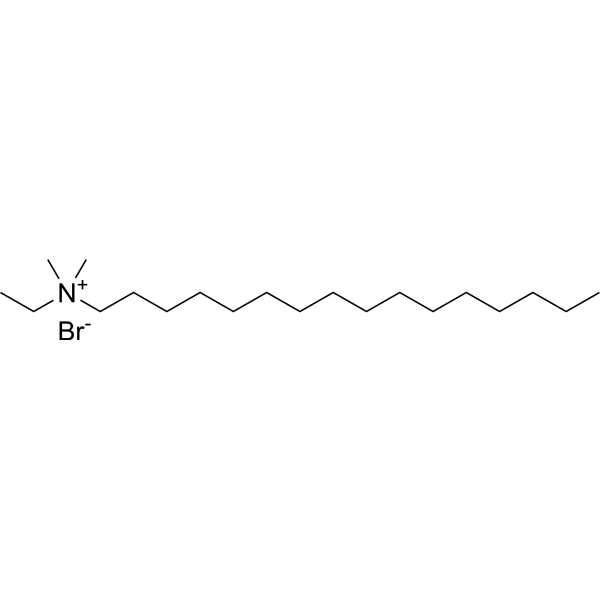
Cetyldimethylethylammonium Bromide
CAS No. 124-03-8
Cetyldimethylethylammonium Bromide( —— )
Catalog No. M28881 CAS No. 124-03-8
Cetyldimethylethylammonium Bromide can be used to induce extracellular secretion of beta-galactosidase.
Purity : >98% (HPLC)
 COA
COA
 Datasheet
Datasheet
 HNMR
HNMR
 HPLC
HPLC
 MSDS
MSDS
 Handing Instructions
Handing Instructions
| Size | Price / USD | Stock | Quantity |
| 5MG | 177 | In Stock |


|
| 10MG | 264 | In Stock |


|
| 25MG | 474 | In Stock |


|
| 50MG | 686 | In Stock |


|
| 100MG | 963 | In Stock |


|
| 500MG | 1917 | In Stock |


|
| 1G | Get Quote | In Stock |


|
Biological Information
-
Product NameCetyldimethylethylammonium Bromide
-
NoteResearch use only, not for human use.
-
Brief DescriptionCetyldimethylethylammonium Bromide can be used to induce extracellular secretion of beta-galactosidase.
-
DescriptionCetyldimethylethylammonium Bromide can be used to induce extracellular secretion of beta-galactosidase.
-
In Vitro——
-
In Vivo——
-
Synonyms——
-
PathwayOthers
-
TargetOther Targets
-
Recptorinflammation|Antioxidant
-
Research Area——
-
Indication——
Chemical Information
-
CAS Number124-03-8
-
Formula Weight378.483
-
Molecular FormulaC20H44BrN
-
Purity>98% (HPLC)
-
Solubility——
-
SMILES[Br-].CCCCCCCCCCCCCCCC[N+](C)(C)CC
-
Chemical Name——
Shipping & Storage Information
-
Storage(-20℃)
-
ShippingWith Ice Pack
-
Stability≥ 2 years
Reference
1.Comparative antioxidant and antiplasmodial activities of 11-O-galloylbergenin and bergenin isolated from Bergenia ligulata. Trop Biomed. 2014 Mar;31(1):143-8.
molnova catalog



related products
-
Forsythoside H
Forsythoside H is a nartural product from Forsythia suspense (Thunb.) Vahl.
-
Diacetyldichlorofluo...
2′,7′-Dichlorofluorescein diacetate is a cell-permeable fluorogenic probe that is useful for the detection of reactive oxygen species (ROS) and nitric oxide (NO) and for the determination of the degree of overall oxidative stress.
-
Taxifolin 3-O-glucos...
Taxifolin 3'-O-glucoside is a natural product from Chamaecyparis obtuse.



 Cart
Cart
 sales@molnova.com
sales@molnova.com


